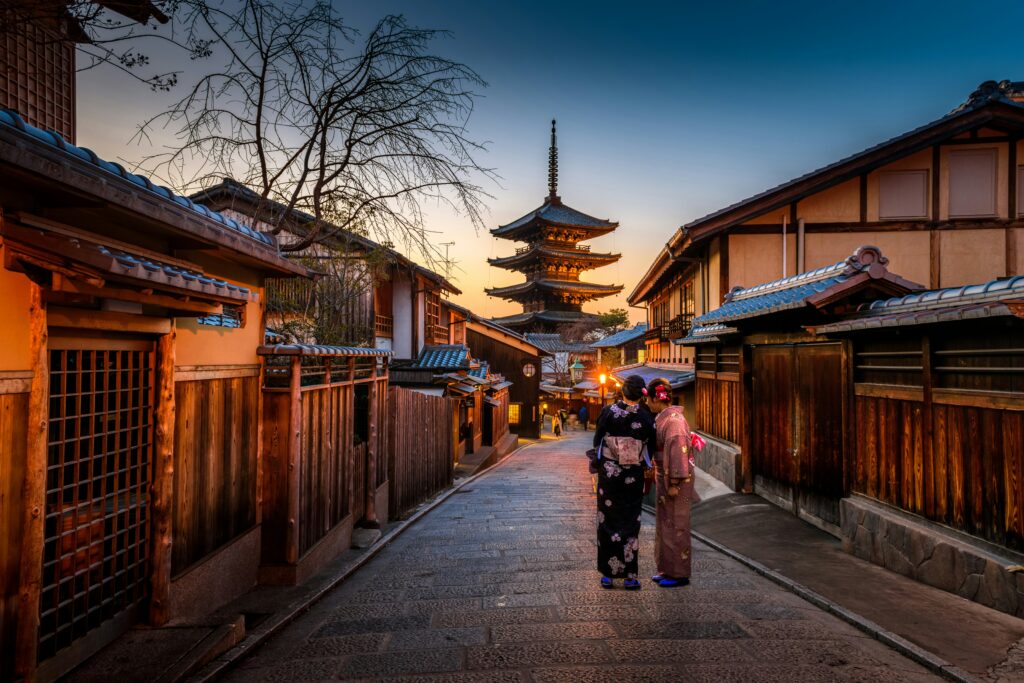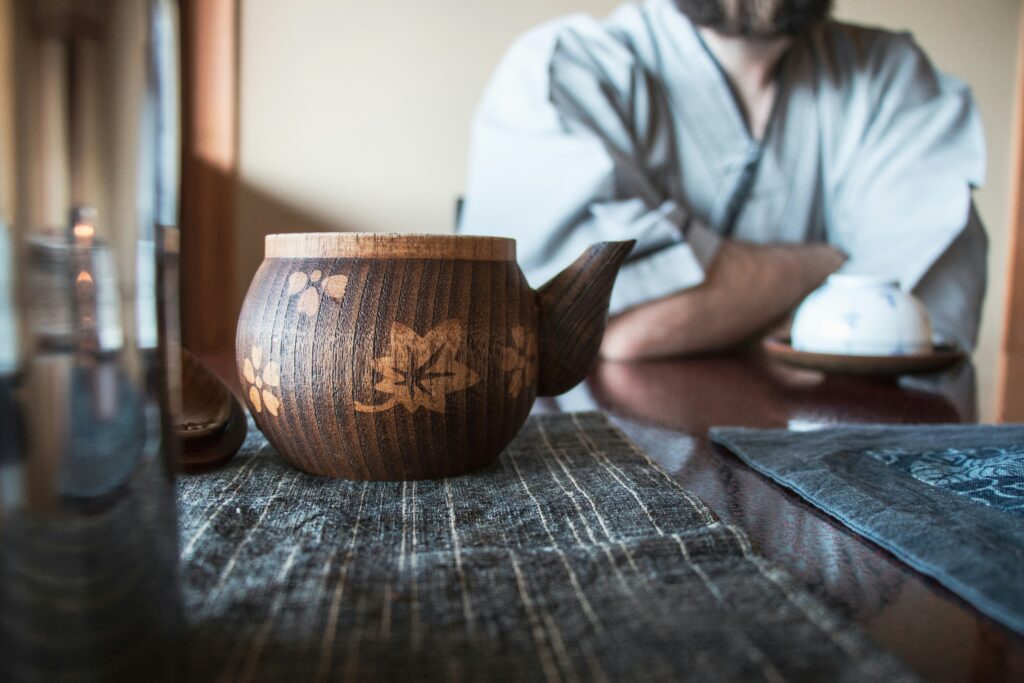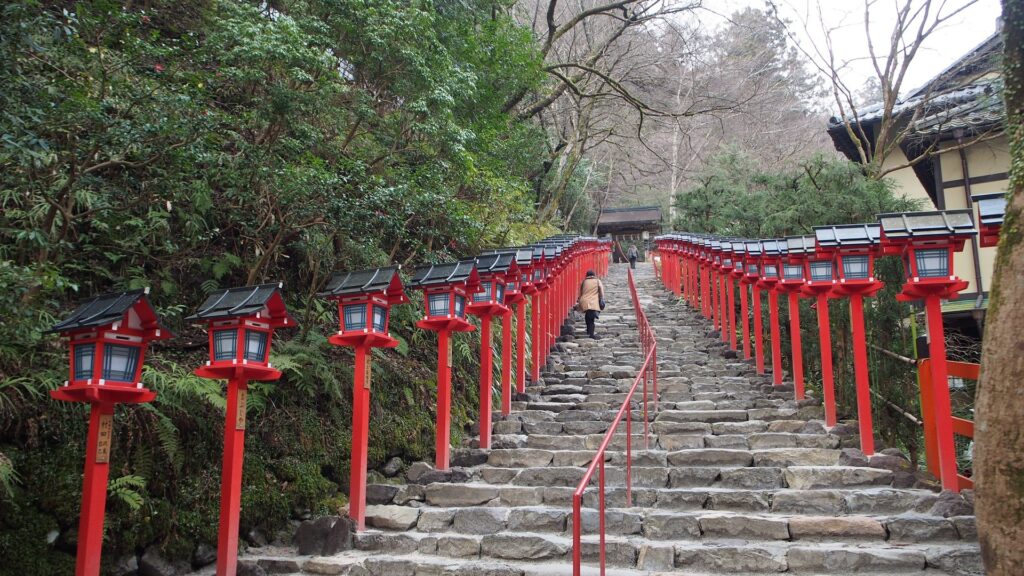Japan, a country steeped in rich history and traditions, offers an unparalleled travel experience. One such experience that allows visitors to immerse themselves in the country’s culture is participating in a traditional tea ceremony and exploring the enchanting geisha districts. In this article, we will take you on a virtual journey through these two extraordinary aspects of Japanese culture.

Deeply rooted in the ideals of harmony, respect, purity, and tranquility, the traditional tea ceremony, known as “sado” or “chado,” is a form of art that goes beyond simply drinking tea. It is a spiritual practice that highlights the importance of being present in the moment and mindful of every gesture, every movement. The tea ceremony has been practiced for centuries and has evolved into a highly ritualized and precise sequence of events.
To fully appreciate the intricacies of this art form, it is helpful to have a knowledgeable guide who can explain the various steps and meanings behind each action. One of the most renowned tea ceremony venues in Japan is the Urasenke tea school located in Kyoto, the cultural heart of the nation. Here, visitors can learn about the history, philosophy, and techniques of the tea ceremony in a serene and authentic setting.

The ceremony begins as you enter the tea room, designed in such a way to promote a sense of tranquility. You are greeted by the host with a traditional bow, and you reciprocate the gesture, acknowledging the honor of being invited into this sacred space. The room is adorned with carefully selected art pieces that reflect the season, adding a touch of natural beauty to the ambiance.
The host then skillfully prepares the tea by meticulously measuring the tea leaves, boiling water, and whisking the tea to achieve a perfect froth. The tea, typically matcha, is served in delicate handmade cups, and the host presents it to each guest individually. In Japanese culture, receiving a cup of tea is a gesture of utmost respect, and it is considered impolite to drink it before expressing gratitude.
More:Read about on Mount Fuji, Japan: Volcano and Capture Picturesque Views
With the tea in your hands, you savor its unique taste, noticing the subtle flavors and aroma. The silence in the room allows you to be fully present, appreciating the moment and reflecting on the beauty of this centuries-old tradition. As the tea ceremony comes to a close, the host cleans the utensils with utmost care, symbolizing the ephemeral nature of life and the importance of appreciating the beauty in every detail.
After experiencing the serenity of the tea ceremony, it is time to venture into the captivating world of the geisha districts, known as “hanamachi.” Kyoto, particularly the Gion district, is renowned for its geisha culture, offering a glimpse into the intricate lives of these graceful entertainers.

As you wander through the narrow cobblestone alleys, which are lined with traditional machiya houses, you can’t help but feel transported to a different era. The area is steeped in history, and the buildings exude an old-world charm. The geisha, or “geiko” as they are known in Kyoto, can be seen elegantly gliding through the streets, adorned in vibrant kimonos and their faces delicately painted with white powder.
More: Wanted to download Odisha Magazines, visit here
To fully appreciate the world of geisha, it is recommended to book a dinner or tea ceremony at one of the exclusive ochaya (teahouses) in Gion. These hidden gems have strict rules and are usually invitation-only. However, by engaging the services of a reputable travel agency, you can gain access to this elusive world and witness a performance by a geisha or maiko (apprentice geisha). The geisha will showcase their skills in traditional arts such as playing the shamisen (a stringed instrument), dancing, and engaging in witty conversation.

Walking through the geisha districts is like stepping into a living museum. Each street corner tells a story, and the sound of wooden sandals against the pavement echoes with the memories of the past. Some establishments still operate as geisha houses, where young women train to perfect their art and uphold the legacy of the profession.
As the day slowly turns into evening, the charm of the geisha districts intensifies. The lanterns gently illuminate the streets, casting a warm golden glow, while the soft rustling of kimonos fills the air. Witnessing this enchanting scene leaves visitors with a profound appreciation for the dedication and skill of the geisha community.

Participating in a traditional tea ceremony and exploring the geisha districts is an unforgettable way to immerse oneself in Japan’s captivating cultural heritage. These experiences provide a rare glimpse into a world steeped in tradition, where beauty and grace are celebrated. By partaking in these customs, one gains not only a deeper understanding of Japan’s rich history but also a newfound appreciation for the beauty found in simplicity and mindfulness.
FAQ For Kyoto, Japan: Participate in a Traditional Tea Ceremony
What is a traditional tea ceremony in Kyoto?
A traditional tea ceremony in Kyoto is a ritualistic way of preparing and serving Japanese green tea known as matcha. It embodies harmony, respect, purity, and tranquility.
Where can I participate in a tea ceremony in Kyoto?
You can participate in a traditional tea ceremony at various tea houses, temples, and cultural centers in Kyoto. Some popular places include Urasenke, Camellia Tea Ceremony, and En Tea Ceremony.
What is a geisha district in Kyoto?
Geisha districts in Kyoto, known as “hanamachi,” are areas where geisha and maiko (apprentice geisha) entertain guests through traditional arts like dance, music, and conversation. Gion and Pontocho are famous geisha districts in Kyoto.
Can I see geisha and maiko in Kyoto?
Yes, you can spot geisha and maiko in traditional attire walking through the streets of Gion and Pontocho in the early evening as they move between engagements.
Are there any specific etiquette rules to follow when visiting a geisha district?
When visiting a geisha district, it’s important to be respectful, avoid interrupting their work, and refrain from taking photos without permission. Additionally, it’s considerate to not approach geisha and maiko directly unless through official channels.
What other cultural experiences can I enjoy in Kyoto besides tea ceremonies and geisha districts?
In addition to tea ceremonies and geisha districts, you can explore historic temples, tranquil gardens, traditional ryokan (inns), indulge in Kaiseki cuisine, attend a kabuki performance, and participate in craft workshops like pottery or calligraphy.

